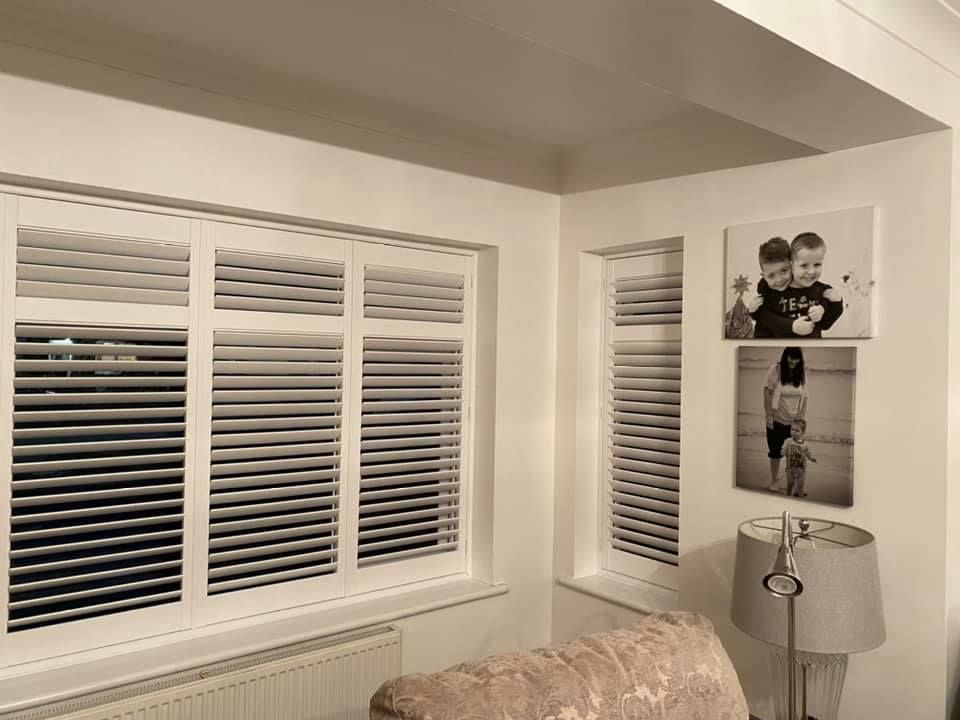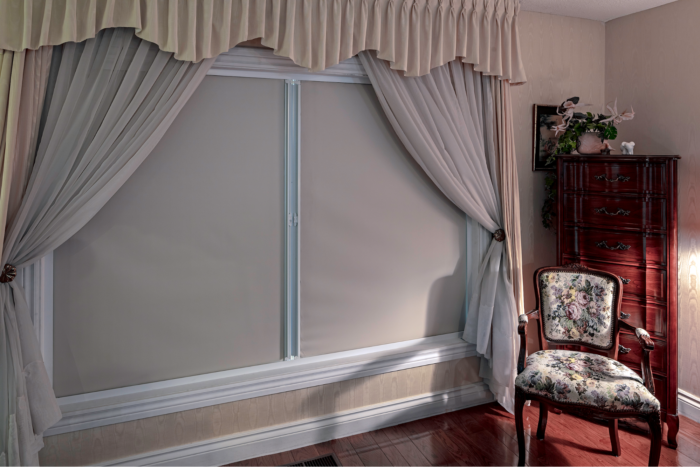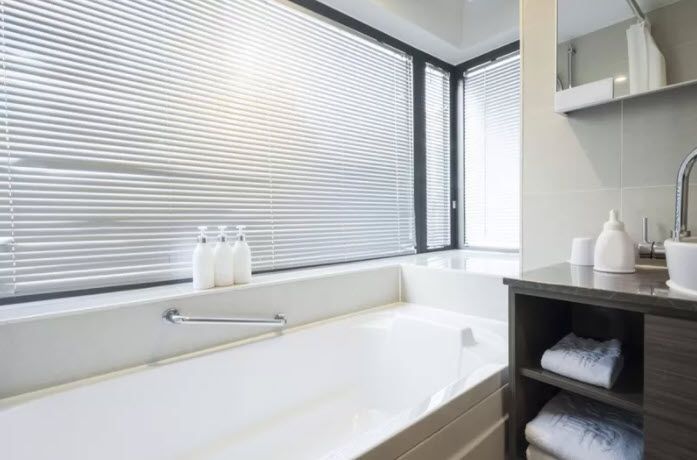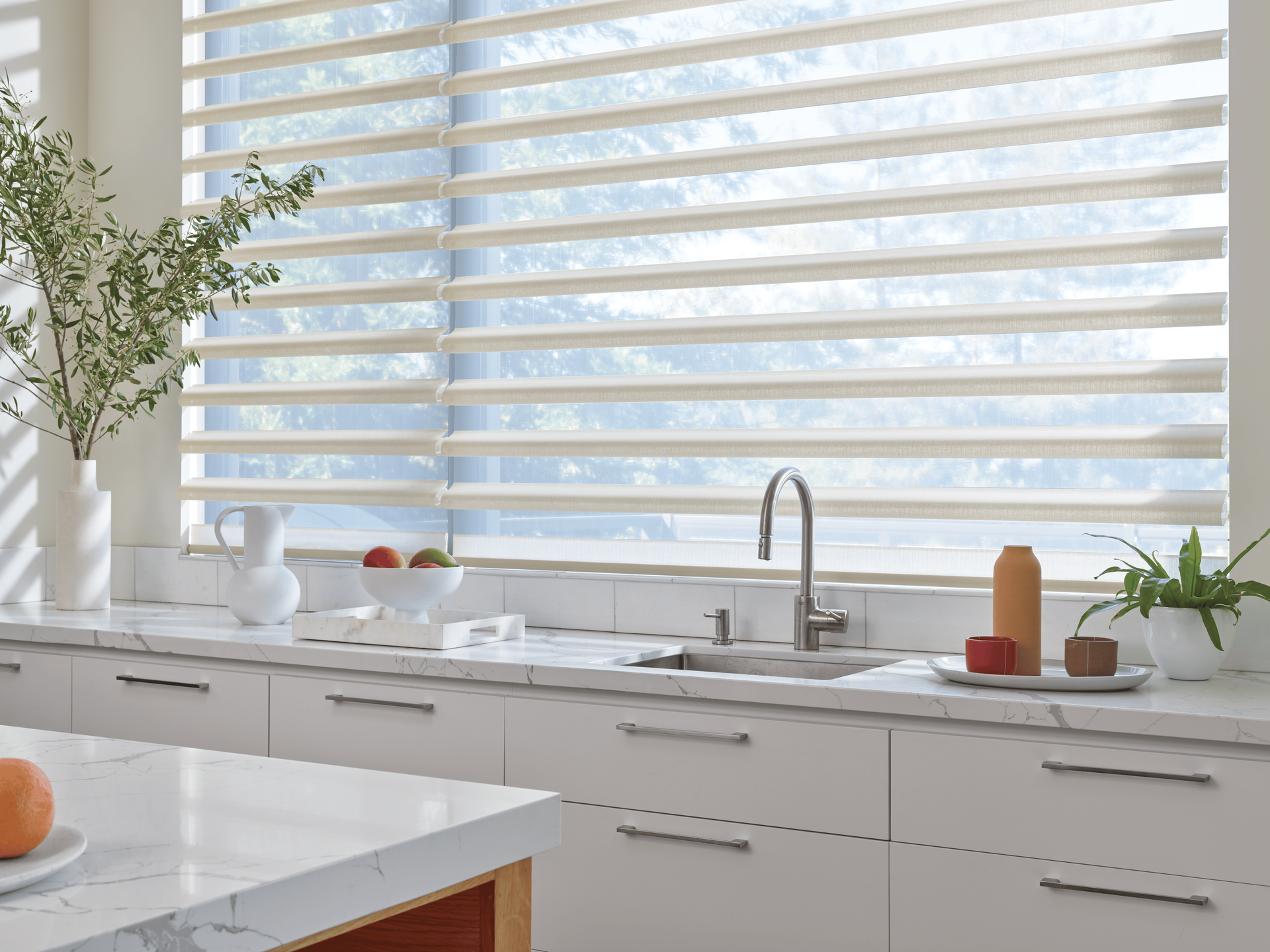What Maintenance Is Required to Keep
Blinds in Good Condition?
TLDR;
To keep blinds in good condition, clean them regularly based on material type, inspect them for wear and tear every few months, and handle them gently to extend their lifespan.
Love Is Blinds MI recommends dusting weekly, deep-cleaning seasonally, and protecting blinds from moisture, UV damage, and tangled cords.
Why Clean Blinds Regularly?

Blinds gather dust, allergens, and grime faster than many homeowners realize. Without regular cleaning, blinds can become stained, warped, or discolored — shortening their lifespan and affecting indoor air quality.
Neglecting blind maintenance can lead to:
- Accumulation of allergens and bacteria, especially in homes with pets
- Decreased energy efficiency due to blocked light and damaged slats
- Diminished visual appeal and reduced property value
Think of blinds as filters for your windows. Just as HVAC filters trap particles from the air, blinds collect debris that can affect both your health and home aesthetics.
Benefits of Blind Maintenance
- Preserves appearance: Keeps blinds from looking dingy or worn out
- Improves air quality: Removes dust, dander, and pollen
- Extends lifespan: Prevents buildup that causes premature wear
- Boosts energy efficiency: Well-maintained blinds block or allow sunlight effectively
- Saves money: Reduces the need for replacements or repairs
Understanding Blind Types and Their Care Needs
Each blind material requires a specific maintenance approach. Here’s how to clean and care for each type:
Wooden Blinds
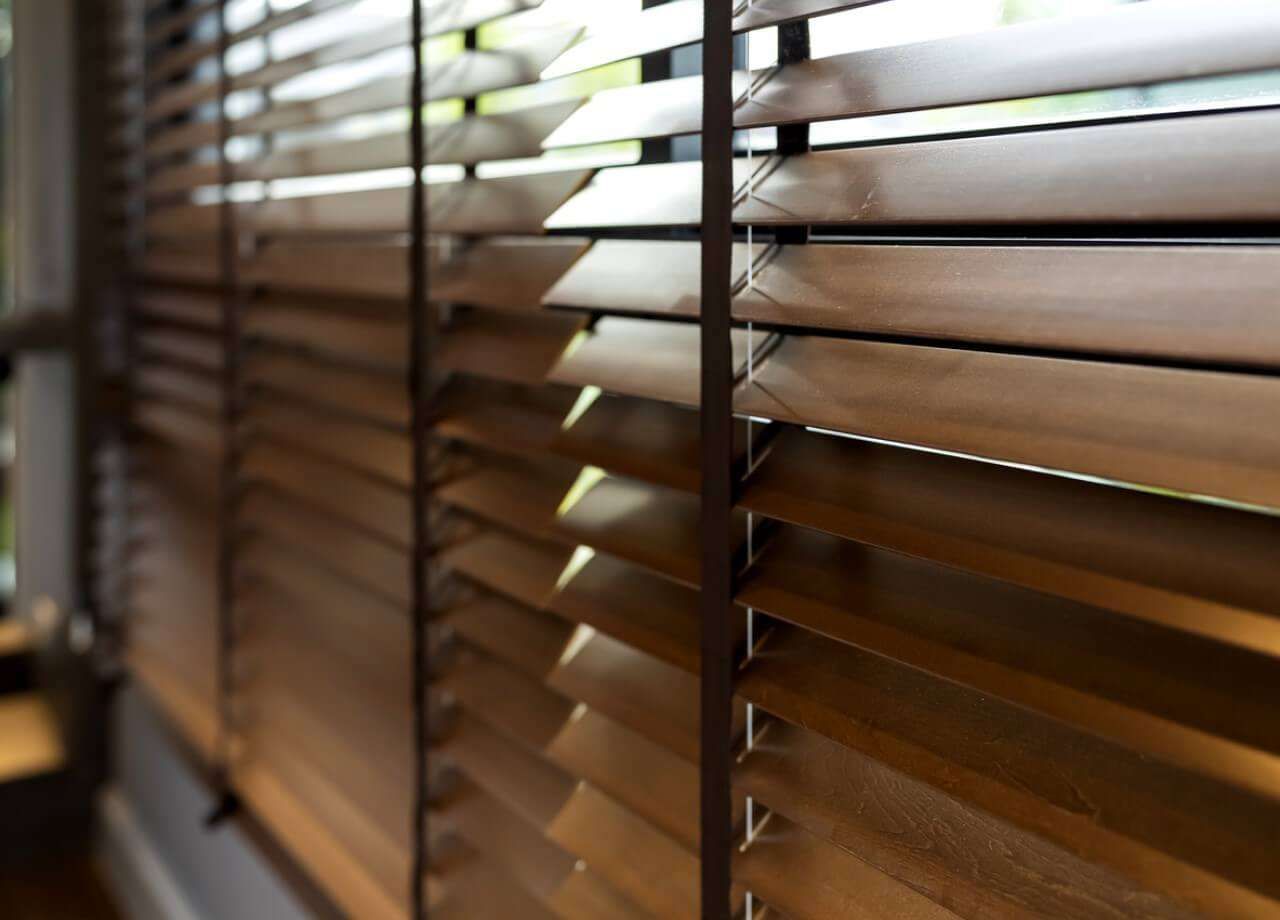
- Dust weekly using a soft microfiber cloth
- Avoid water — moisture warps wood
- Use furniture polish or wood conditioner for added shine
- Keep away from high-humidity rooms like bathrooms or kitchens
Wood blinds offer timeless style, but they're sensitive. At Love Is Blinds MI, we recommend installing them in dry areas only.
Faux Wood Blinds
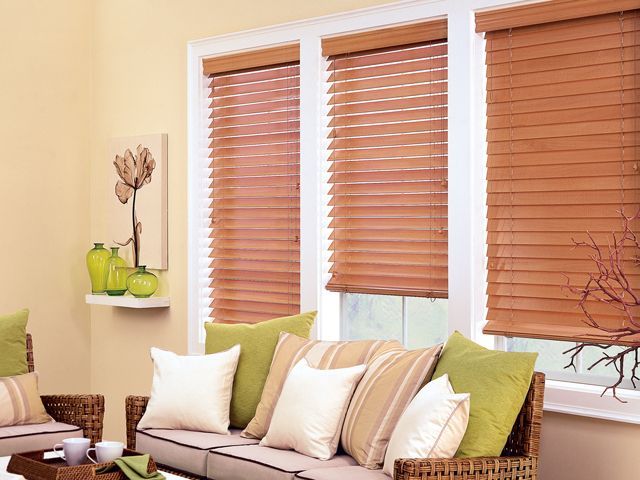
- Safe to clean with water — unlike real wood
- Use mild soap and a damp cloth
- Dry immediately to prevent warping
- UV protection: Install curtain liners or UV-blocking film on windows
Faux wood blinds are durable and moisture-resistant, making them ideal for bathrooms and kitchens.
Fabric or Cellular Shades
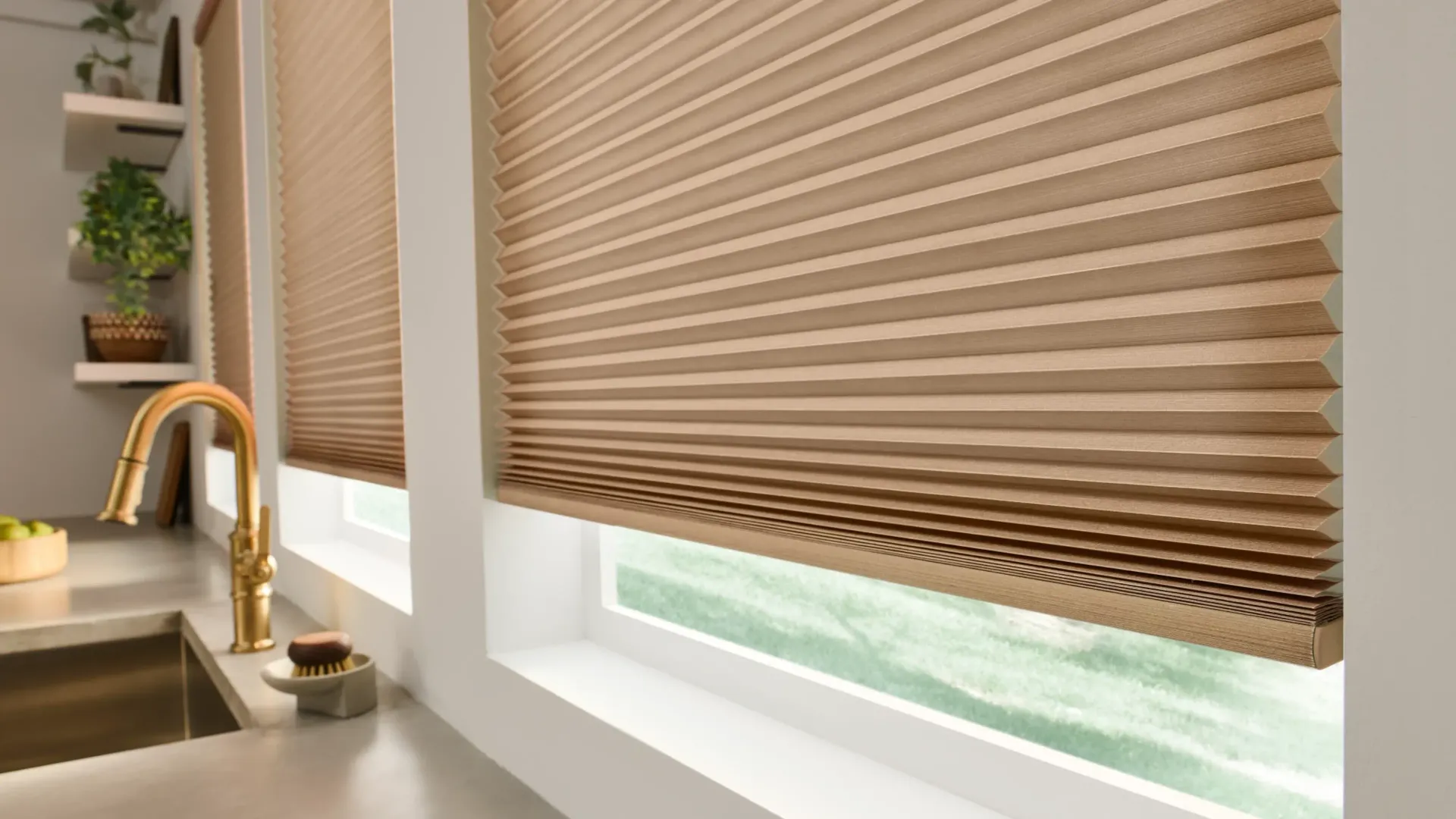
- Vacuum gently using a soft brush attachment
- Spot-clean stains with a mild detergent
- Avoid submerging in water
- Check creases or crushed areas for damage
Cellular and fabric blinds enhance insulation but need delicate care to avoid deformities and discoloration.
Aluminum and Vinyl Blinds
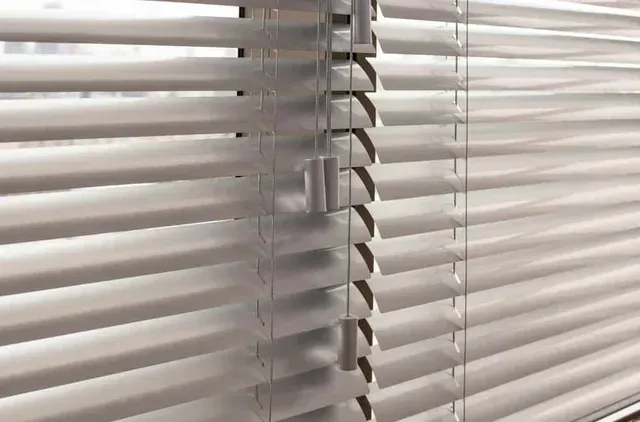
- Wipe with a damp cloth regularly
- Avoid harsh chemicals that strip the finish
- Disassemble for deep cleaning by soaking in mild soapy water
- Rinse and air dry before reinstalling
These blinds are common in commercial settings and rentals — easy to maintain but prone to denting.
Blind Cleaning Schedule: Keep It Simple

To prevent buildup and keep blinds looking new, follow this maintenance schedule:
Daily or Weekly Maintenance
- Light dusting with a microfiber cloth or handheld duster
- Use a vacuum with a blind attachment for quick passes
Monthly Cleaning
- Wipe down slats with a damp cloth and gentle cleaner
- Inspect for signs of wear (discoloration, fraying, loosened cords)
- Tighten any loose brackets or screws
Seasonal Deep Cleaning (Every 3–6 Months)
- Remove blinds for a more thorough clean (depending on material)
- Address specific stains or buildup
- Apply polish, conditioner, or UV protection as needed
- Re-string or adjust cords if needed
Best Tools and Products for Safe Blind Cleaning
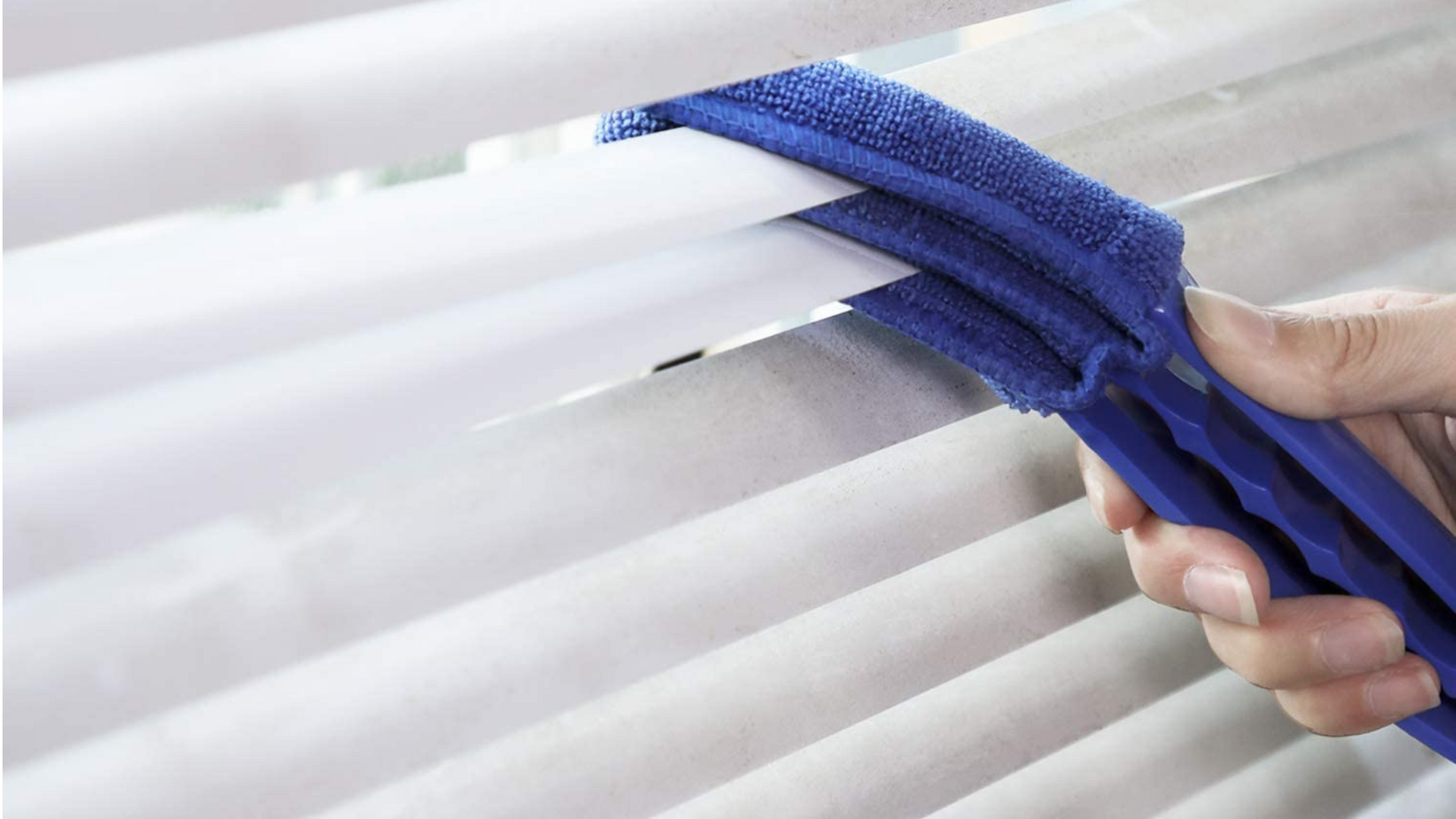
Having the right tools makes all the difference. These essentials make blind maintenance easier and more effective:
- Microfiber cloths – traps dust without scratching surfaces
- Vacuum with brush attachment – perfect for fabric blinds
- Blind duster tool – cleans multiple slats at once
- Mild detergents – gentle enough for all materials
- Distilled water – avoids mineral spots on blinds
- Wood cleaner – safe for natural wood
- UV spray – protects from sun fading
Avoid bleach, ammonia, or abrasive scrubbing pads. These can ruin both appearance and function.
Prevent Blind Damage Before It Happens
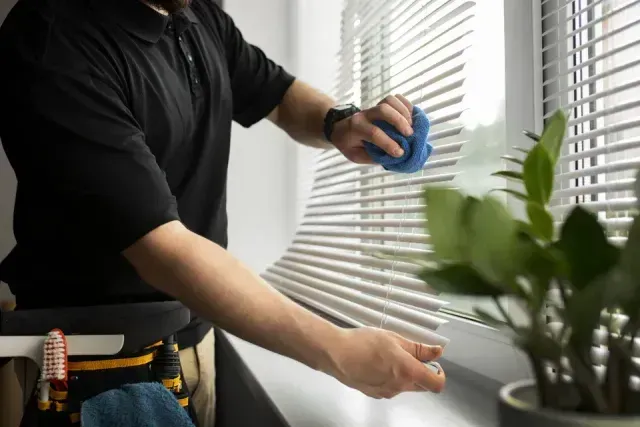
Proactive care saves time, money, and frustration. At Love Is Blinds MI, we often see blinds damaged simply from being mishandled or ignored — especially when Preventing Blind Warping isn't part of the regular maintenance routine.
Preventative Tips:
- Untangle cords regularly and keep them out of reach of pets and children
- Avoid yanking cords or slats when raising/lowering
- Protect from moisture by choosing appropriate blinds for each room
- Use curtain liners, UV film, or consider the
best placement for solar blinds to shield from sun damage and extend the life of your window treatments.
- Open/close gently to prevent mechanical failures
- Avoid excessive weight on cords or motorized systems
Signs Your Blinds Need Repair or Replacement
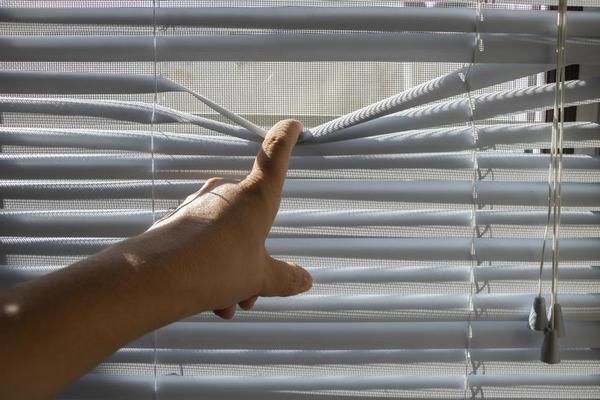
Like any fixture, blinds show wear over time. Look out for these warning signs:
- Slats won’t stay aligned or tilt properly
- Broken, bent, or warped slats
- Discoloration that doesn’t clean off
- Cord doesn’t retract or is frayed
- Noisy or stuck mechanisms
If you notice multiple issues, it may be time for a replacement. Blinds typically last
5–8 years, but with proper care, they can last longer.
Should You Repair Blinds Yourself or Call a Pro?

Not every issue needs a technician. Some blind repairs are surprisingly simple — others require expertise, especially if safety or motorization is involved.
DIY Repairs
- Replace a broken slat
- Re-thread cords or secure loose ends
- Tighten or replace brackets
- Realign tilt mechanisms
Call a Professional For:
- Motorized or automated blinds
- Replacing entire tilt systems
- Warped wooden slats from water damage
- Full reinstallation or window resizing
Love Is Blinds MI offers blind repair services for cases where DIY just won’t cut it. Reach out before a small problem becomes a full replacement.
Blind Maintenance Checklist You Can Follow

Use this checklist to stay ahead of blind upkeep. Print it or save it on your phone as a recurring task reminder.
Monthly Checklist:
- Dust blinds weekly
- Vacuum or wipe down monthly
- Inspect for damage or misalignment
- Check cords for fraying or tangling
Seasonal Checklist:
- Deep clean each blind type
- Condition wood or apply UV protection
- Repair or replace broken hardware
- Clean window areas to prevent grime transfer
Annual Checklist:
- Evaluate for upgrades (motorized or cordless systems)
- Replace old blinds if beyond repair
- Update rooms with moisture-resistant blinds if needed
Common Blind Maintenance Questions
How often should blinds be cleaned?
Light dusting weekly and deeper cleaning every 3–6 months is ideal. Rooms with pets, smoke, or high traffic may require more frequent attention.
What’s the best way to clean dusty blinds?
Use a microfiber cloth or blind-specific duster. Avoid feather dusters — they scatter particles more than they capture them.
Can you wash fabric blinds?
You can spot-clean fabric blinds with mild detergent. Avoid submerging them in water unless the manufacturer recommends it.
Do blinds wear out over time?
Yes. Materials can degrade from sun, moisture, and repeated use. Lifespan varies by type and maintenance routine.
Should I take blinds down to clean them?
Only for deep cleans or heavy buildup. Most routine maintenance can be done while blinds are installed.
Keep Blinds Looking New with Easy Steps

Blind maintenance doesn’t have to be complicated or time-consuming. A few minutes each week can save you from expensive replacements and keep your home or office looking polished.
Love Is Blinds MI encourages homeowners and businesses alike to:
- Choose blinds appropriate for each room’s environment
- Follow a realistic cleaning schedule
- Watch for signs of damage early
- Invest in the right tools
- Call in professionals when needed
Want help maintaining your blinds? Contact Love Is Blinds MI for a consultation or service appointment.





